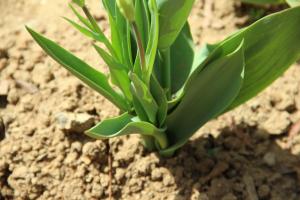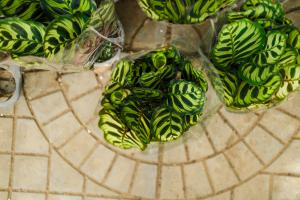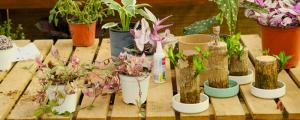How Deep to Plant Flowers in Pots?
Planting flowers in pots is one of the best ways to add color and charm to any outdoor space. However, if you want your flowers to thrive in pots, it's essential to plant them at the right depth. In this article, we'll discuss how deep to plant flowers in pots and share some tips to help you create beautiful and healthy container gardens.
Why is Planting Depth Important?
Planting depth is critical to the health and growth of your flowers. If you plant your flowers too shallow, their roots won't have enough space to grow and expand, and the plants will become top-heavy and unstable. On the other hand, if you plant your flowers too deep, their roots will become suffocated, and the plants may not survive.
How Deep Should You Plant Flowers?
The ideal planting depth for flowers in pots will depend on the type of flower you are planting. As a general rule of thumb, most flowers should be planted with the crown of the plant (where the stem meets the roots) at or slightly above soil level. This will allow the roots to have ample space to grow and will ensure that the plant is stable and secure.
If you're planting bulbs or tubers, the planting depth will typically be the same depth as the bulb or tuber itself. For example, if you're planting a daffodil bulb, the bulb should be planted 6 inches deep. If you're planting a begonia tuber, the tuber should be planted about 2 inches deep.
How to Plant Flowers in Pots
To plant flowers in pots, follow these simple steps:
Choose a container with drainage holes in the bottom.
Add a layer of gravel or stones to the bottom of the pot to promote drainage.
Fil the pot with potting soil, leaving enough room at the top to accommodate the plant.
Remove the plant from its container and gently tease out the roots, removing any dead or damaged roots.
Place the plant in the pot and fill in around it with potting soil, making sure to cover the roots completely.
Water the plant thoroughly, and add more soil if necessary to fill any gaps.
Tips for Planting Flowers in Pots
Here are some additional tips to help you create vibrant and healthy container gardens:
Choose flowers that are suitable for your climate and location.
Use high-quality potting soil that is well-draining and nutrient-rich.
Water your plants regularly, but be careful not to overwater them.
Fertilize your plants every few weeks with a balanced, water-soluble fertilizer.
Place your pots in a location with the right amount of sunlight for your flowers.
Rotate your pots regularly to ensure that all sides of the plant receive adequate sunlight.
Conclusion
Planting flowers in pots is a great way to bring color and life to your outdoor space. By following the right planting depth and using high-quality materials, you can create gorgeous and thriving container gardens that will brighten up any corner of your home.

 how many times do yo...
how many times do yo... how many planted tre...
how many planted tre... how many pine trees ...
how many pine trees ... how many pecan trees...
how many pecan trees... how many plants comp...
how many plants comp... how many plants can ...
how many plants can ... how many plants and ...
how many plants and ... how many pepper plan...
how many pepper plan...






























